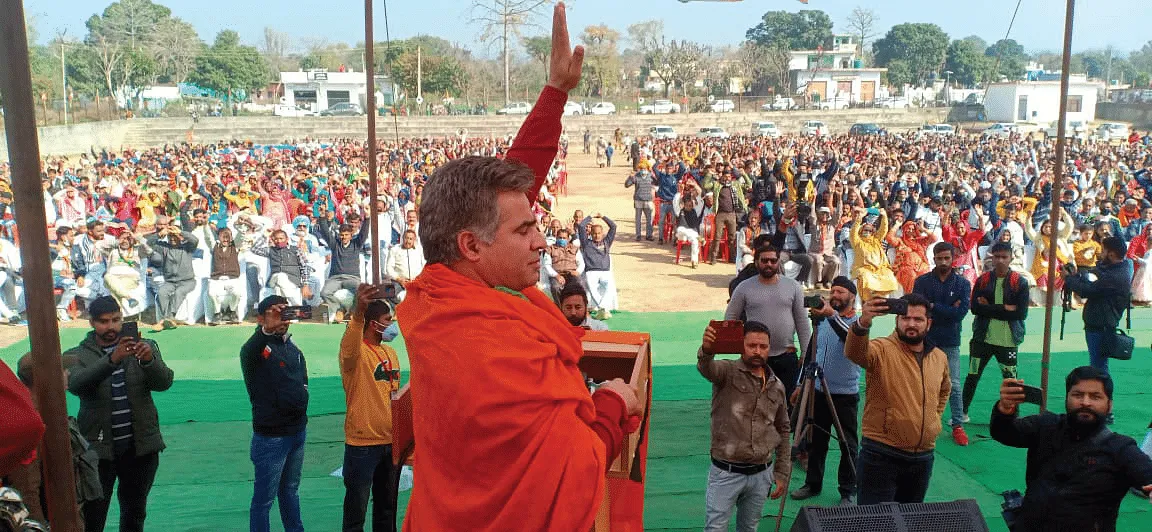A new geopolitical landscape is shaping up in South Asia. This is especially due to what is happening in Afghanistan, the country roiled by proclaimed and proxy wars since 1979 when the erstwhile Soviet Union troops marched in to the territory to further the Communist ideology. That war with Soviet Union came to an end in 1990, the same year when the Soviet Union disintegrated, marking the end of Cold War. But for Afghanistan, things continued to remain hot. There began a long-spell of civil war. It passed through several trials and tribulations before becoming a hub of terrorism. That tag is persisting. The United States that entered the territory after the horrors of 9/11 unfolded. Neither it had nor it ever contemplated an exit strategy seriously. There were too many flip flops in its policies. The American people were left in a state of utter confusion – sometimes there was a talk of surge in troops, and on the other an extraordinary urgency was displayed in pulling out the troops.
The Donald Trump administration is now seeking to pull out of Afghanistan through a more agreeable route of negotiations. The negotiations have been tough, but the tougher part is what happens when the US troops leave. The related issue is what would be the outcome of the intra-Afghan talks already muddled by the incessant violence and the interference by outsiders.
It will be a mistake to view the geography of South Asia as per the political maps of the eight countries that form now almost defunct South Asia Association of Regional Cooperation (SAARC). The realities have changed and its political wires are now connected to China as well, though officially it is not part of SAARC. This will make a huge difference to the whole geo-politics of the region, where US has its wide stakes. The US-China rivalry is now characterising the politics and alliances across the continents. The US, whether under President Donal Trump or Joe Biden, the Democratic Party challenger, after November 3 elections, cannot withdraw fully from the region. It may pull out its troops from Afghanistan if that possibility materialises in next few months’ time as the intra Afghan talks have begun, though not on a promising note.
But what it cannot do for its own strategic reasons is to withdraw its political and diplomatic influence from the region as it would not want, nor it would be advisable for it, to leave the space vacant to be occupied by China. Beijing is expanding its influence in the region. It is making no secret of its intentions. Those are more than audible and visible.
Beijing is guided by two reasons – one, its strategic interests demand that it moves ahead from the geographical and political miles it has already scaled with the help of its all weather friend Pakistan to accomplish the objectives of its super ambitious Belt and Road Initiative (BRI) of which China-Pakistan Economic Corridor ( CPEC) is a flagship project. China needs a fool-proof safe environment for success of its projects in both Pakistan and Afghanistan.
It has to cover many flanks. It will have to do so with every new footprint in the region. Chinese have little or no respect for the local sensitivities and culture. It knows that there would be resistance to its moves , and howsoever Pakistan may oblige, it cannot travel beyond a point. The region is inhabited by the conservative to ultra-conservative societies to whom their culture and traditions matter more than anything else.
Indeed, the increasing Chinese footprints whether in the Himalayas-Gilgit-Baltistan- or in plains or close to the warm waters of Arabian sea, where Gwadar port is located in Baluchistan in Pakistan, pose a strategic threat to India. There is a school of thought that views Chinese-Pakistani friendship especially against the backdrop of continued standoff between Chinese and Indian troops facing each other along the LAC in Eastern Ladakh – the region that was part of Jammu and Kashmir state until August 4 last year, is a worrying scenario for India.
There is a genuine apprehension that China and Pakistan would attempt to encircle Indian strategic interests in the region along the LoC and LAC . This part has to be taken care of. And how to do so is not something that the soldiers alone would be able to do. This requires other strategic inputs, particularly diplomatic skills, not just in which Pakistan is responded to in international fora, but a long-term vision that encompasses strategic advantages in the long run on its own, of course with substantial support from the world capitals.






